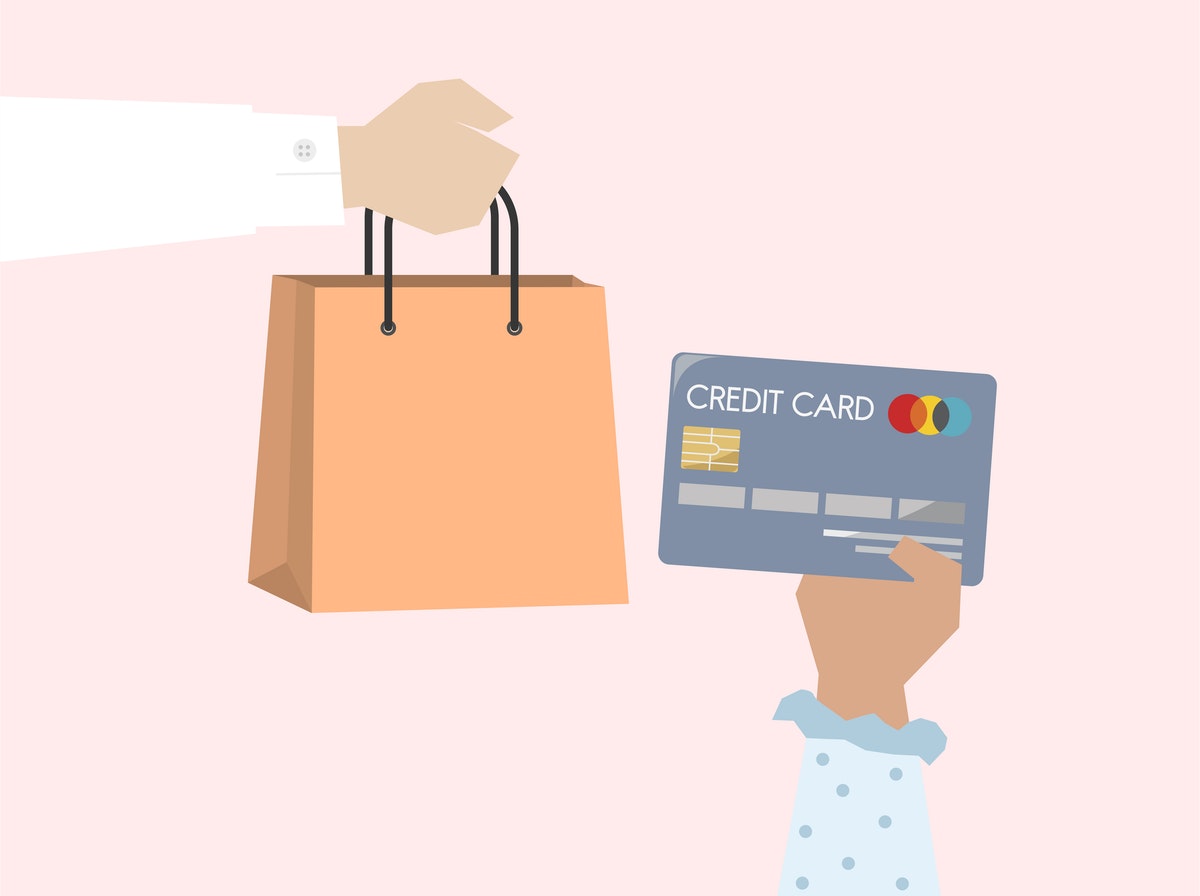20+ best online marketplaces in Germany
Written by
Kinga EdwardsPublished on
The e-commerce market in Germany is one of the largest in the world. Find out about 20+ best online marketplaces in Germany.

The e-commerce market is getting bigger and bigger. During the last few years, more and more stationary have decided to go online. They know that the key to gaining customer interest is being present in multiple online markets. Do you sell clothes in your online store? Great! But who said you couldn’t put them on Zalando either?
The e-commerce market in Germany is the second-largest in Europe and 6th in the world. That is why you should get to know the biggest e-commerce marketplaces in this country. You don’t have to join them immediately. Just start by observing the activities of the largest in the industry. You can learn a lot in this way.
As online marketplaces in Germany become increasingly popular, you should also pay attention to price comparison platforms. If e-commerce cooperates with such a website, it makes shopping much easier for the customer. When a customer discovers where prices are most favorable, they can make a purchase immediately on this website.
Want to know more? So let’s jump in.
Why do retailers implement online marketplaces?
Well, there are many reasons for that. Here we list the most important ones.
Expanding customer reach
Online marketplaces offer retailers a platform that enables them to reach a vast number of customers in a relatively short period. These platforms already have a substantial customer base actively searching for specific products, which significantly increases the visibility of the retailer’s offerings.
Diversifying product offerings
Multiple products can be released simultaneously by retailers participating in online marketplaces. This strategy provides customers with a wider range of choices and generates increased interest in the retailer’s brand. Which, of course, leads to higher revenue.
Enhanced customer convenience
Many online marketplaces offer features such as product availability notifications, which significantly enhance the shopping experience for customers. Instead of making repeated trips to a physical store to check for product availability, customers can simply opt to be notified when the product is back in stock. Simple as that.
Leveraging promotional opportunities
Online marketplaces frequently send out newsletters showcasing a variety of products from different retailers. Knowing how to get more newsletter subscribers and having products included there, retailers can benefit from additional promotional opportunities and further increase their brand visibility and potential customer reach.
Overview of the German online marketplace landscape
In 2025, online retail in Germany is expected to hit €92.4 billion. That’s not a tiny bump. It’s proof that buying stuff online has gone from convenience to the norm. Online marketplaces are a significant part of this growth, generating €44 billion in sales and increasing their share of the e-commerce market to 55%.
Indeed, more than 50% of sales originate from online marketplaces. Not individual webshops. We’re talking Amazon, Otto, eBay, Kaufland, Zalando, and more. The platforms where you scroll endlessly at midnight, wondering if you really need another air fryer.
But what makes these marketplaces so dominant?
Good question.
They’re easy. They’re trusted. And they do the heavy lifting – logistics, payments, visibility. For small businesses especially, as joining a big marketplace often means getting seen by thousands (or millions) of buyers without spending a fortune on marketing.
That’s why so many sellers in Germany are choosing to plug into existing marketplaces rather than build their own shop from scratch.
And what’s changing in 2025?
For one, second-hand is booming. We’re talking €120 billion in recommerce sales. That’s a lot of books, jackets, and pre-loved tech. Platforms that support resale, like eBay, Vinted, or even Zalando’s pre-owned section, are tapping into this demand. It’s greener, cheaper, and honestly, kind of fun.
Then there’s cross-border shopping, especially with the rest of the DACH countries, Germany’s neighbors, or even China. German consumers trust their local brands but still love to try new things from other countries. They even tap the fast fashion from China’s giants.
Examples of the best online marketplaces in Germany
When it comes to the best online marketplaces in Germany, there’s no single winner – because it really depends on what you’re selling or buying. From fashion and electronics to handmade goods and groceries, each marketplace plays its own role. Some are massive and global, others are more local and specialized.
Let’s not prolong and check out our list of the best marketplaces.
Kaufland
Kaufland.de is a major online marketplace in Germany that sells everything from electronics to garden tools and pet food.
Thinking of going all-in on multichannel selling? Kaufland might be your next stop. With over 13,000 sellers and more than 40 million products spanning 6,400 categories, Kaufland.de has become a go-to platform for shoppers seeking variety and value. The marketplace attracts approximately 32 million visitors monthly.
You can sell fashion, toys, groceries, you name it. They even let you expand into other countries through Kaufland Global Marketplace. Small sellers can launch quickly without building a whole webshop. There’s also great visibility if you want to scale fast. German shoppers love it for the price variety and quick delivery. It’s busy, efficient, and very seller-friendly.
Amazon
Amazon.de is Germany’s largest e-commerce marketplace. It offers everything from books and electronics to food and furniture.
You probably guessed it’s big, but did you know it’s Amazon’s second-largest market after the US, with 55 million customers? The platform brings in millions of shoppers every day. For sellers, it’s a goldmine if you’re looking for reach.
You can choose between Fulfilled by Amazon (FBA) or do your own shipping. Either way, the trust factor is massive. German customers stick with Amazon for ease, delivery speed, and product range. It’s not the cheapest marketplace, but it’s arguably the most powerful. Want volume? Start here.
OTTO
Otto.de is one of Germany’s most established online retailers, known for fashion, home goods, and electronics.
Unlike Amazon, Otto’s vibe is more curated. You won’t find millions of random items. Instead, it’s structured and selective. That’s part of its appeal. Otto has built serious trust with German families. In fact, it’s one of the top 3 most visited e-commerce sites in Germany.
Sellers love that they can showcase their brand and not get buried. Shoppers like knowing they’re buying from verified partners. It’s premium without being snobby.
Etsy
Etsy.de is a creative marketplace for handmade, vintage, and personalized items, with a strong presence in Germany.
Want to sell something unique? Etsy is the place for it. Think art, jewelry, custom gifts, or vintage collectibles. Etsy offers a platform for independent creators and small businesses to showcase their products to a global audience. With 95 million active buyers worldwide, including a growing customer base in Germany, Etsy provides opportunities for sellers to reach niche markets.
German shoppers appreciate the craft, not just the product. Etsy lets small brands shine without needing a marketing team. It’s more of a community than a corporation. If you’re a maker or designer, it’s where your work will be seen and valued.
Zalando
Zalando.de is Germany’s biggest fashion and lifestyle marketplace, featuring thousands of clothing and accessory brands.
With over 7,000 brands and more than 50 million active customers across Europe, Zalando.de provides a comprehensive shopping experience. And it works beautifully on mobile. In 2025, the company projects a revenue and gross merchandise volume (GMV) growth of 4–9%. But Zalando’s not just about clothes.
It’s about experience. Returns are super easy, which Germans love. For sellers, it’s a smart route into fashion retail without opening a store. Zalando Partner Program lets brands keep control over pricing and stock. There’s also a strong focus on sustainability.
eBay
eBay.de is a versatile marketplace in Germany for both new and used products, from collectibles to tech.
Looking to flip a phone or sell a sofa? Or maybe start a business? eBay’s got you. It still sees huge traffic and supports auction-style and fixed-price listings. You can reach bargain hunters, collectors, and casual shoppers all at once.
eBay also invests in seller tools and protection. It’s flexible, which works well for small shops. While some people think of it as old-school, the numbers prove otherwise. It’s alive, active, and still a key player in Germany.
eBay Kleinanzeigen
eBay Kleinanzeigen is Germany’s top classifieds site, connecting local buyers and sellers for everyday goods and services.
Need a second-hand bike? A job? A used washing machine? You’ll probably find it here. eBay Kleinanzeigen is free to use, fast to post, and very local. Perfect for decluttering or side hustling. Businesses can post too, especially service providers and local shops.
With approximately 30 million users per month and over 50 million listings, eBay Kleinanzeigen facilitates transactions ranging from furniture and electronics to job postings and real estate. And it still feels simple, even with its size.
SHEIN
Shein.com is a global fast-fashion platform offering trendy clothing and accessories at affordable prices.
Shein has rapidly gained popularity in Germany, accounting for 6.6% of its global sales. The platform attracts a young audience, with 19.24% of visitors aged 18 to 24 and 26.75% aged 25 to 34. Shein’s direct-to-consumer model allows for quick adaptation to fashion trends.
The EU’s starting to pay closer attention to platforms like Shein. There’s talk of tightening customs checks to cut down on unsafe or fake products slipping through. That could mean slower shipping or more rules for sellers down the line. Still, Shein isn’t slowing down. It keeps growing across Europe, finding new buyers and adding more local warehouses. The prices, the volume, the constant flow of trends – it’s hard for shoppers to ignore.
MediaMarkt
MediaMarkt.de is Germany’s leading electronics retailer, offering a wide range of consumer electronics and appliances.
Our list of the best online marketplaces in Germany must include MediaMarkt. After all, it generated approximately $2.29 billion in online revenue in 2024. The platform is ranked #1 in the Consumer Electronics category and #1,934 globally as of April 2025. MediaMarkt’s user base is predominantly male (69.19%), with the largest age group being 25 to 34 years old.
MediaMarkt’s been trying new ideas lately, like the “Tech Village” in Berlin, which mixes hands-on shopping with showroom vibes. It’s all part of making stores feel more exciting again. The brand’s still a heavyweight in electronics. Big range, well-known name, and plenty of shoppers who trust it when they need gear that works.
Yatego
Yatego.com is a German online marketplace hosting a variety of independent retailers across multiple product categories.
Yatego offers a platform for small and medium-sized businesses to reach customers online. The marketplace focuses on providing a diverse range of products, from home goods to fashion. Yatego’s user-friendly interface and support for retailers make it an attractive option for businesses looking to expand their online presence.
Yatego puts a lot of focus on keeping things clear and fair between buyers and sellers. That trust really matters, especially for smaller shops. They’ve also been tuning into what shoppers want lately: new categories, better tools, smoother search. It’s all about staying useful and keeping people coming back.
Avocadostore
Avocadostore.de is Germany’s largest online marketplace for sustainable and eco-friendly products.
Avocadostore specializes in offering products that meet strict sustainability criteria, including fair trade and organic certifications. The platform experienced a 48% increase in sales year-over-year while reducing its cost per acquisition by 51% through effective digital advertising strategies. Avocadostore’s commitment to environmental responsibility resonates with a growing segment of eco-conscious consumers.
Avocadostore keeps things green. Everything on the site (from clothes to home goods) meets strict sustainability standards. They don’t just sell eco-basics either. You’ll find yoga gear, accessories, and everyday items that fit a more conscious lifestyle. It’s a go-to spot if you care about what you buy and where it comes from.
Idealo
Idealo.de is Germany’s leading price comparison website, helping consumers find the best deals across various online retailers.
Idealo.de is ranked #1 in the Price Comparison category and #964 globally as of April 2025. The platform aggregates offers from numerous online shops, allowing users to compare prices and make informed purchasing decisions. Idealo’s comprehensive database and user-friendly interface make it a valuable tool for budget-conscious shoppers.
Idealo makes it easier to shop smart. You get price comparisons, sure, but also real reviews and ratings to help you decide. That mix of info keeps people coming back. If you’re after a good deal without the guesswork, this is where a lot of German shoppers start.
OnBuy
OnBuy.com is a UK-based online marketplace expanding into the German market, offering a wide range of products from various sellers.
OnBuy has over 11,000 sellers and offers competitive commission rates ranging from 7% to 15%. The platform’s European expansion strategy includes targeting the German market and giving consumers more choices through its broad categories and exceptional products. OnBuy’s commitment to fair pricing and seller support differentiates it from other marketplaces.
OnBuy’s growing fast, and that says a lot about how much shoppers want more choice. Its move into Germany adds fresh energy to e-commerce. For sellers, it’s a new space to get noticed. And for buyers, it means more options without the same old platforms.
Fruugo
Fruugo.com is a global online marketplace that enables cross-border shopping, offering products from retailers around the world.
Fruugo facilitates over 14.8 million orders, with more than 80% being cross-border transactions. The platform supports multiple languages and currencies, and as a result, makes international shopping accessible. Fruugo’s diverse product range and global reach attract a wide customer base.
What stands out with Fruugo is how global it feels without being overwhelming. You’re browsing offers from all over, but it doesn’t feel messy. It’s organized, clean, and easy to follow. As their network of sellers grows, so does the range – new brands, more categories, better deals. That reach is what keeps Fruugo on the radar for cross-border shopping.
ASOS
ASOS.com is a UK-based online fashion retailer with a wide range of clothing, accessories, and beauty products.
ASOS keeps things fast. The catalog changes often, and that’s part of what keeps shoppers hooked. In its financial year ending September 2025, the company expects adjusted earnings (EBITDA) to increase by at least 60%, reaching between £130 million and £150 million, up from £80 million the previous year. This growth is attributed to a turnaround plan emphasizing reduced discounting and improved inventory management.
In Germany, shoppers lean on ASOS for fresh drops, easy returns, and a solid mix of streetwear. For smaller fashion labels, the ASOS Marketplace gives space to stand out and stay in control. It’s a good match for niche brands with a clear identity. And with a clean design and sharp curation, ASOS keeps its edge without trying too hard.
Rakuten.de
Rakuten.de is a Japanese marketplace with a growing selection of electronics, home goods, and everyday products for German consumers.
It’s not huge in Germany, but it’s one of the biggest platforms globally. Rakuten got over 149.2 million visits in April worldwide. The German site is part of a broader ecosystem with rewards, mobile payments, and e-books. It’s not Amazon-level traffic here, but shoppers who care about loyalty points love Rakuten.
Sellers also get a lot of flexibility, plus access to tools for tracking, analytics, and customer retention. You won’t see as many random listings. It’s more structured. Rakuten appeals to buyers who want quality plus perks.
Shopapotheke.com
Shopapotheke.com is a leading online pharmacy in Germany, offering a wide range of pharmaceutical and health-related products.
The platform is known for its comprehensive selection, including over-the-counter medicines, wellness products, and beauty items. Shopapotheke is committed to providing a seamless online shopping experience for its customers. It offers free shipping and delivers within 1-2 working days. The platform also provides detailed product descriptions and customer reviews to help buyers make informed decisions.
Furthermore, Shopapotheke.com is dedicated to customer education. It offers a wealth of information on various health topics in its Medikamenten-Lexikon and Symptome-Lexikon. The whole commitment sets Shopapotheke apart from the leading online pharmacies in Germany.
AliExpress
AliExpress.com is a global marketplace where German shoppers buy electronics, gadgets, fashion, and home items directly from international sellers.
AliExpress also belongs to the best online marketplaces in Germany. It has become a go-to platform for low prices and variety. In Germany, it attracts a significant number of shoppers looking for deals. The platform’s user-friendly interface and extensive product range make it a popular choice among consumers seeking affordable options.
AliExpress is working with more local delivery partners now, trying to cut down wait times in Germany. They’ve also been putting money into regional warehouses, which helps with quicker shipping and fewer hold-ups at customs. It’s all part of making the whole experience feel less distant.
Bonprix
Bonprix.de is a German fashion brand offering affordable clothing for women, men, and kids.
Bonprix, part of the Otto Group, focuses on functional, trend-aware fashion with decent quality. The platform is especially popular among shoppers seeking basics and smart-casual pieces. Bonprix also offers a wide range of plus-size and family fashion options.
The site’s easy to browse, and the filters actually help you find what you want. Bonprix also runs regular seasonal campaigns, so sellers can catch those shopping waves. And lately, they’ve been leaning into inclusive sizing and more sustainable fabrics. It’s their way of staying current without losing what works.
AboutYou
AboutYou.de is a fashion platform tailored to personal style, which offers a curated experience for German shoppers.
About You emphasizes personalization and user profiles to enhance the shopping experience. The platform attracts a younger audience and allows brands to showcase their products creatively. About You offers an influencer program and various cross-selling opportunities. Its modern user interface and focus on style-conscious buyers make it a preferred destination for fashion enthusiasts.
Moreover, the brand offers flexible integration. They’ve made it easy for partners to plug in, thanks to the About You Cloud. And once you’re in, the system does the heavy lifting – it recommends the right products to the right people, based on real shopping behavior.
Vinted
Vinted.de is Germany’s top platform for second-hand fashion and accessories, where anyone can buy or sell used clothes.
Vinted has become a significant player in the second-hand market. It reported a 36% increase in revenue for 2024. The platform allows users to sell items without fees and attracts casual sellers. Vinted’s community-focused approach and easy listing process make it popular among younger users. While not a direct sales channel for brands, it offers valuable market insights into trending products and resale value.
Vinted’s app just works – no fuss, no clutter. That’s why so many people keep coming back. In Germany, buying second-hand isn’t some side trend anymore. It’s mainstream now, and Vinted’s right at the center of it.
Shpock
Shpock.com is a mobile-first marketplace for local buying and selling, popular in Germany, Austria, and the UK.
Shpock, short for “Shop in your Pocket,” has been downloaded over 50 million times across Europe, making it one of the most popular online marketplaces in the region. In April 2025, the platform recorded approximately 597,200 visits, with Germany accounting for 33.46% of the traffic.
Shpock keeps things simple. You snap a few pics, write a quick description, and your item’s up for sale. It’s all built for local deals, so you’re usually chatting with someone nearby. Payments? You’ve got options: PayPal works, and in-app payments have become even easier. It’s quick, casual, and works best when you want to clear space or grab a bargain close to home.
HomeToGo
Hometogo.de is a vacation rental marketplace aggregating listings from multiple providers, offering a wide selection of accommodations.
HomeToGo operates in 25 countries, including Germany, and partners with over 60,000 suppliers. In the financial year 2024, it reported booking revenues of €259 million, marking a 36% year-over-year increase. The platform’s 2025 travel forecast indicates that the average stay duration has increased to 22 days, a 19% rise from the previous year, with travelers venturing an average of 1,603 miles to their destinations.
HomeToGo’s been leaning into smart features, like AI tools that help you plan without the usual stress. And with so many listings in one place, it’s just easy to find something that fits. The site feels clean, the filters actually work, and it doesn’t take long to book.
Social media marketplaces
Let’s face it, social media attracts the most people.
Platforms like Facebook Marketplace and Instagram Shopping are pulling in more everyday sellers, and buyers love the quick, informal feel. It’s easy to browse, message, and close a deal, all in one app.
For local stuff, Facebook still holds strong. And on Instagram, brands use Shops to tag products directly in posts and stories. It’s less formal than traditional marketplaces, but the reach is massive. Especially for small businesses trying to build a following and sell at the same time. It’s fast, visual, and getting more popular every year.
And what about the TikTok Shop? It’s picking up fast in Germany. Creators can link products straight in videos. It’s impulsive, trend-driven, and perfect for reaching younger shoppers.
Best online marketplaces in Germany – give them a try!
Now you know why you should implement an online marketplace and have several examples. For sure, the best online marketplaces in Germany provide many opportunities for businesses in most industries.
Here you have a simple guidebook – we have shown you which marketplace you should pay attention to. And on which you should appear if you want to squeeze the best out of e-commerce.
***


